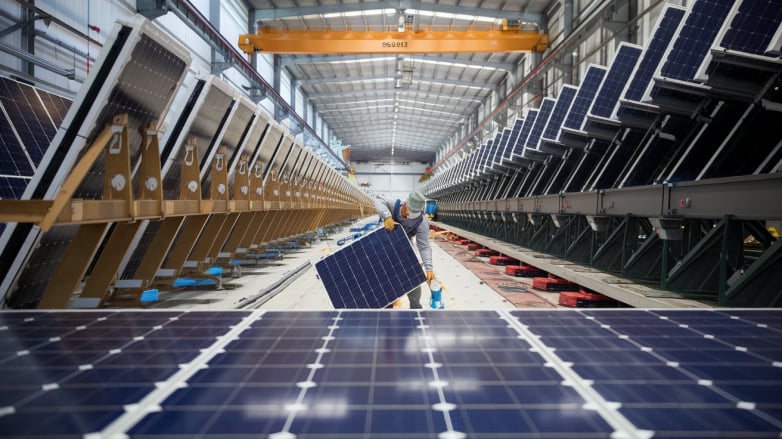PolyU Tandem Breakthrough Pushes Perovskite-Silicon Solar Cells Beyond Limits Efficiency

May 30, 2025 02:47 PM ET
- PolyU researchers shatter efficiency records with a 33.89 % perovskite–silicon tandem solar cell, using a novel LiF–EDAI bilayer to curb recombination losses.

Perovskite-silicon tandem solar cells have hovered tantalisingly close to the 34 % efficiency mark for years, yet interfacial energy loss kept the industry from crossing the line. A research team at The Hong Kong Polytechnic University (PolyU) has now vaulted that barrier, unveiling a bilayer-passivated tandem device independently certified at 33.89 %—the first two-junction cell to eclipse the single-junction Shockley–Queisser limit of 33.7 %.
The science behind the leap
Led by Assistant Professor Yin Jun, the group tackled the notorious recombination losses at the perovskite/electron-transport interface. Instead of relying on a single passivation coating, they stacked an ultrathin, nanoscopic lattice of lithium fluoride (LiF) with a self-assembled layer of short-chain ethylenediammonium diiodide (EDAI). The LiF offers field-effect passivation—repelling minority carriers—while the EDAI chemically “heals” dangling bonds that would otherwise trap electrons. Together, the layers form an intertwined shield just a few atoms thick, accelerating charge extraction and stifling non-radiative losses.
Device architecture matters too
PolyU applied the bilayer to a perovskite film grown on a double-textured silicon heterojunction wafer: gentle pyramids on the front to catch more sunlight and aggressive grooves on the back to keep photons bouncing until absorbed. This light-management trick pairs with robust rear passivation, lifting photocurrent without harming voltage.
The result is a cell boasting a 1.97-V open-circuit voltage, an 83 % fill factor and markedly improved long-term stability—attributes rarely achieved together in perovskite tandems. The work, carried out with LONGi Green Energy and Soochow University, signals that commercial-grade tandem panels could be closer than many market analysts anticipated.
Why it matters
Breaking the 33.7 % threshold is more than a bragging right; it validates tandem technology’s ability to outpace conventional silicon while leveraging the latter’s mature supply chain. As module makers seek cheaper ways to hit ever-higher performance targets, PolyU’s bilayer strategy—achieved with readily available materials and scalable processes—could be a template for gigawatt-scale production.
Beyond the lab, higher-efficiency panels translate into fewer modules per megawatt, smaller land footprints and lower balance-of-system costs—an attractive proposition as the world races toward net-zero emissions.





